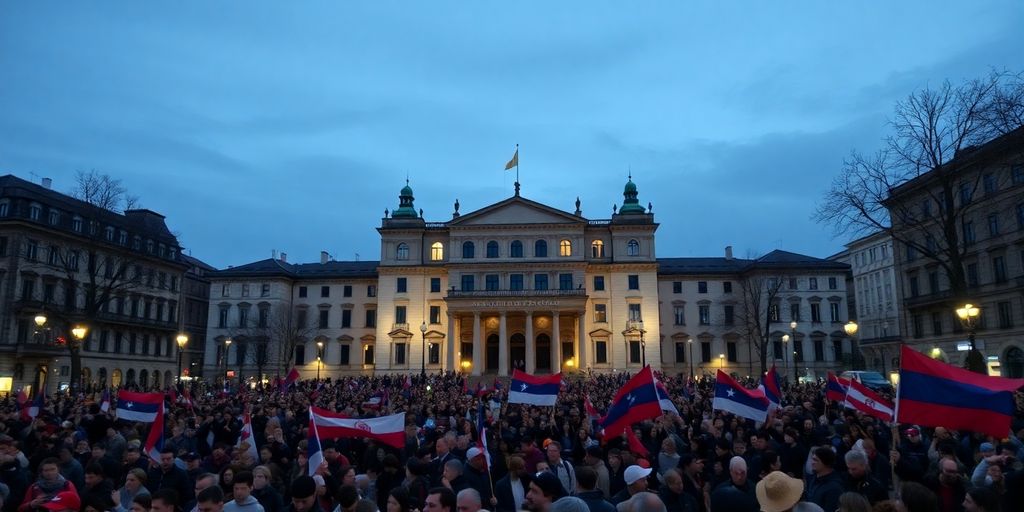Mass protests erupted in Serbia’s capital, Belgrade, as an estimated 100,000 to 325,000 demonstrators gathered to voice their discontent against President Aleksandar Vucic and his government. The protests, sparked by a tragic railway station collapse that killed 15 people, have become a significant movement demanding accountability and an end to corruption.
Key Takeaways
- Massive Turnout: Estimates of protest attendance range from 100,000 to over 325,000, marking one of the largest demonstrations in Serbian history.
- Student-Led Movement: University students have been at the forefront of the protests, advocating for justice and transparency following the November tragedy.
- Government Response: President Vucic has faced increasing pressure, with calls for his resignation and accusations of corruption.
- Public Sentiment: The protests reflect widespread dissatisfaction with the government, with citizens demanding accountability and reform.
Background of the Protests
The protests began in response to the collapse of a concrete canopy at a railway station in Novi Sad on November 1, 2024, which resulted in the deaths of 15 individuals. Many citizens attribute the disaster to government negligence and corruption, igniting a wave of demonstrations across the country.
The Protest Dynamics
On March 15, 2025, demonstrators filled the streets of Belgrade, with reports indicating that the crowd swelled to between 100,000 and 325,000 people. The protest was organized under the slogan "15 for 15," commemorating the victims of the Novi Sad tragedy. Protesters observed a moment of silence for the deceased, highlighting the emotional weight of the event.
Despite occasional rain, the atmosphere was charged with energy as participants waved flags and chanted slogans such as "He’s Finished!" and "Pump it Up!" The protests were largely peaceful, although there were reports of minor clashes between demonstrators and police, leading to heightened tensions.
Government’s Reaction
In the lead-up to the protests, President Vucic warned of potential unrest and threatened severe consequences for any violence. He has dismissed calls for a transitional government and accused opposition parties of attempting to orchestrate a coup. Vucic’s administration has faced criticism for its handling of the protests, with many citizens expressing a desire for a government that prioritizes accountability and justice.
The Role of Students
Students have emerged as a pivotal force in the protests, organizing marches and rallies to demand transparency regarding the circumstances surrounding the Novi Sad disaster. Their determination has resonated with the public, leading to a broader coalition of citizens from various sectors, including farmers and taxi drivers, joining the movement.
Future Implications
The protests signify a critical moment in Serbian politics, as citizens increasingly demand change and accountability from their leaders. The movement has the potential to reshape the political landscape, challenging Vucic’s long-standing grip on power. As the protests continue, the call for justice and reform remains at the forefront of public discourse, with many citizens vowing to persist until their demands are met.
In conclusion, the mass protests in Serbia represent a significant challenge to the current government, fueled by a collective desire for accountability and a more democratic society. The outcome of this movement could have lasting implications for the future of Serbia and its political landscape.
Sources
- An estimated 100,000 join antigovernment rally in Serbia’s Belgrade | Protests News, Al Jazeera.
- Tens of thousands join antigovernment protest in Serbia’s capital, Belgrade | Protests News, Al Jazeera.
- Over 100,000 people join protest rally in Belgrade against Serbia’s president and government, AP News.
- How Serbia’s Student Protest Movement Is Challenging Vucic, Foreign Policy.
- Serbia’s largest-ever rally sees 325,000 protest against government, BBC.






